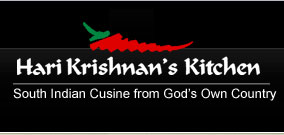Ingredients
Coconuts grow in abundance in Kerala, and consequently, coconut kernel, (sliced or grated) coconut cream and coconut milk are widely used in dishes for thickening and flavoring. Kerala's long coastline, numerous rivers and backwater networks, and strong fishing industry have contributed to many sea and river food based dishes. Rice and cassava (Tapioca) form the staple food of Kerala. All main dishes are made with them and served along with Kootan; the side dishes which may be made from vegetables, meat, fish or a mix of all of them. The main dish for lunch and dinner is boiled rice. The Kerala breakfast shows a rich variety; the main dishes for which are made from rice flour, or fresh or dried cassava. Owing to the weather and the availability of spices, the Kerala cuisine is richly spicy especially the hot ones -chili, black pepper, cardamom, cloves, ginger, and cinnamon.
Historical and cultural influences
For over 2000 years, Kerala has been visited by ocean-goers, including traders from Greece, Rome, the eastern Mediterranean, Arab countries, and Europe (see History of Kerala). Thus, Kerala cuisine is a blend of indigenous dishes and foreign dishes adapted to Kerala tastes.
Pre-independence Kerala was basically split into the princely states of Travancore & Kochi in the south, and Malabar district in the north; the erstwhile split is reflected in the recipes and cooking style of each area. Both Travancore and northern Malabar cuisine consists of a variety of vegetarian dishes using many vegetables and fruits that are not commonly used in curries elsewhere in India including plantains (vazha-ppazham or ethaykka), bitter gourd ('pavaykka' in Travancore and 'kyppakka' in northern Malabar), Yam ('chena'), Colocasia ('chembu'), Ash gourd (Kumbalanga), etc. However, their style of preparation and names of the prepares dishes may vary. Northern Malabar has an array of vegetarian and non-vegetarian dishes such as pathiri (a sort of rice-based pancake, at times paired with a meat curry), porotta (a layered flatbread, said to come from South-East Asia), and the Kerala variant of the popular biriyani, probably from Arab lands. Central Travancore region boasts of a parade of dishes that is largely identified with the Christians of the region.
In addition to historical diversity, the cultural influences, particularly the large percentages of Muslims and Syrian Christians have also contributed unique dishes and styles to Kerala cuisine, especially non-vegetarian dishes. The meat eating habit of the people have been historically limited by religious taboos. Brahmins eschew non vegetarian items
Historically, Kerala was part of the Tamil-speaking area, and Tamilian influence is seen in the popularity of sambar, idli and dosa. European influence is reflected in the numerous bakeries selling cakes, cream horns, and Western-style yeast-leavened bread, and in Anglo-Indian cuisine. The import of potatoes, tomatoes, and chili peppers from the Americas led to their enthusiastic use in Kerala, although except for the ubiquitous peppers, the other ingredients are used more sparingly.
Spices in Kerala Cuisine
As with almost all Indian food, spices play an important part in Kerala cuisine. The main spices used are cinnamon, cardamom, ginger, green and red peppers, cloves, garlic, cumin seeds,coriander, turmeric, and so on. Few fresh herbs are used, unlike in European cuisine, and mainly consist of the commonly used curry leaf, and the occasional use of fresh coriander and mint. While Tamarind and lime are used to make sauces sour in North Malabar areas; the Travancore region uses only kodampuli (Garcinia cambogia), as sour sauces are very popular in Kerala. Sweet and sour dishes are however, rare, but exceptions like the ripe mango version of the pulissery and tamarind-jaggery-ginger chutney known as puliinji or injipuli which is also known as Sou Ginger are popular.
.
Source : Wikipedia |


